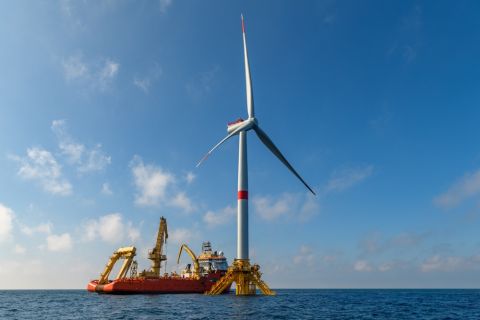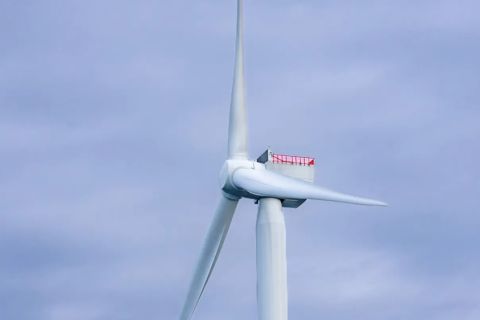Presented by:
[Editor's note: A version of this story appears in the June 2021 issue of Oil and Gas Investor magazine. Subscribe to the magazine here.]
Major independents and many small private operators are close to solving the Powder River Basin in Wyoming. Historically a reservoir play, the stacked pay in deeper source rock has been known as much for its potential as notorious for its variability, thus complexity and cost. The players who have stuck with the basin, as well as those able to bring in their skills from other unconventional plays, are at last gaining traction, bringing costs down and consistency up.
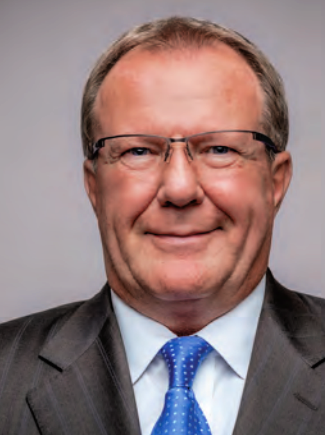
Early this year Continental Resources Inc. achieved what Harold Hamm called a “homecoming,” picking up Samson Resources II’s position in the Powder River Basin. The move was widely seen as validation that the basin is finally ready for prime time.
“We completed the Samson acquisition in early March,” said Pat Bent, senior vice president of operations at Continental Resources, told Oil and Gas Investor. “We have been diligently working to prepare for a two-rig drilling program for this year. We acquired 130,000 net acres that contain three of the top five wells in the play, two of which are operated. There is stacked pay with several horizons to target, including the Shannon, Frontier, Niobrara and Mowry [formations].”
Continental Resources’ first rig was scheduled to be active in May, with the second online in June. “We will be running both rigs through 2021,” said Bent. “We are expecting around 15 to 17 spuds and about 10 wells online for testing by the end of the year. That may sound like an ambitious schedule, but we’ve been developing a clear understanding of this basin for quite some time and have an excellent technical team.”
Jack Stark, president and COO of Continental Resources, told Oil and Gas Investor, “As we studied this play, there are three things in particular that we liked: the stacked pays that produce 70% to 80% oil; the basin is in the early stages of its development with good running room; and early wells have demonstrated competitive economics even before we bring our operational expertise into play.”
Powder River Basin wells tend to run 10,500 ft to 11,000 ft deep, with 2-mile laterals. From those standards, however, completion designs have been highly proprietary, as might be expected early on for a stacked play with highly variable horizons.
Stark elaborated on his description of the play as being in its early stages. The basin was a conventional vertical play and thus was well-known. That was a double-edged sword, however, as it was understood to be challenging during early unconventional development.
“The Powder has been on a lot of people’s radar screen,” Stark said,” but over the years it has not been a target. More recent technical evolution has started to bring the opportunity to the fore.”
Several sources noted the entry of Continental Resources as a turning point for the basin. Bent remained modest, but did agree that the company’s “operational excellence is not just in drilling and completing. It’s financial and operational. All of the above. We have a record as being the low-cost operator on a peer basis for several years now with a demonstrated ability to reduce costs and improve efficiency.”
By way of example, Stark noted, “At our operations in the Bakken and in Oklahoma, we have driven down costs by 25% in the last three years. We will be able to transfer that to the Powder.”
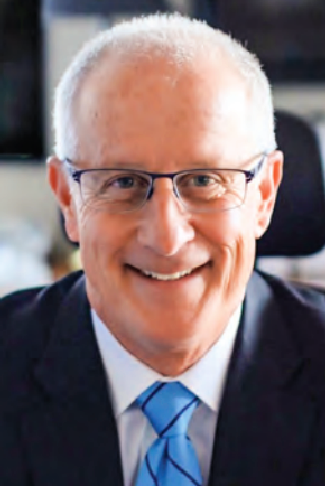
All that said, getting hydrocarbons to the surface is hardly the end of the story. With any developing play, especially one in the middle of the continent, the midstream is always essential. “There is good midstream capacity,” said Bent, “including sufficient takeaway in place for this year.”
Continental Resources acquired some infield gathering with the Samson operations and will continue to make use of that. Bent and Stark said that the company is comfortable building out or having midstream operators build in to its wellheads, whichever makes the most sense field-by-field.
“One of our strengths is that we tend to lease and operate contiguous blocks,” said Bent. “That makes development more economical, including all aspects of infrastructure—water, gas and oil.”
Compelling, yet consolidating
The basin is mostly federal minerals, said Austin McKee, a managing director at Eagle River Energy Advisors, based in Denver. “That means operators have more regulatory hoops to jump through with the BLM [Bureau of Land Management], especially with the challenges our industry is facing with the Biden administration. It was originally an extremely prolific conventional basin with multiple pay zones, including the Parkman, Teapot, Sussex, Shannon, Frontier, Turner and Muddy formations. Horizontal drilling kicked off with operators initially targeting the Frontier/Turner sands and has subsequently shifted to targeting the Niobrara and Mowry source rocks.”
Broadly speaking, well costs associated with 2-mile laterals were as high as $10 million to $12 million when unconventional development began. Improved drilling efficiencies and service-cost reductions have brought that range down significantly. Drilling and completion costs are now in the range of $6 million to $9 million depending on the operator, completion design, depth and target formation. In the core areas of the basin, operators can generate compelling internal rates of return at $50 WTI.
The Powder River Basin is a focus for Eagle River, which has facilitated a variety of transactions in the basin including operated, nonoperated, mineral and royalty assets.
“The basin is dominated by a few large publicly traded operators,” Michael Stolze, partner told Oil and Gas Investor, “including EOG, Devon, Chesapeake, Occidental [through its acquisition of Anadarko Petroleum Corp.] and now Continental Resources through its acquisition of Samson. But there are also a large number of private equity-backed portfolio companies that entered the basin over the past five years given the nascent stage of horizontal development and stacked pay potential.”
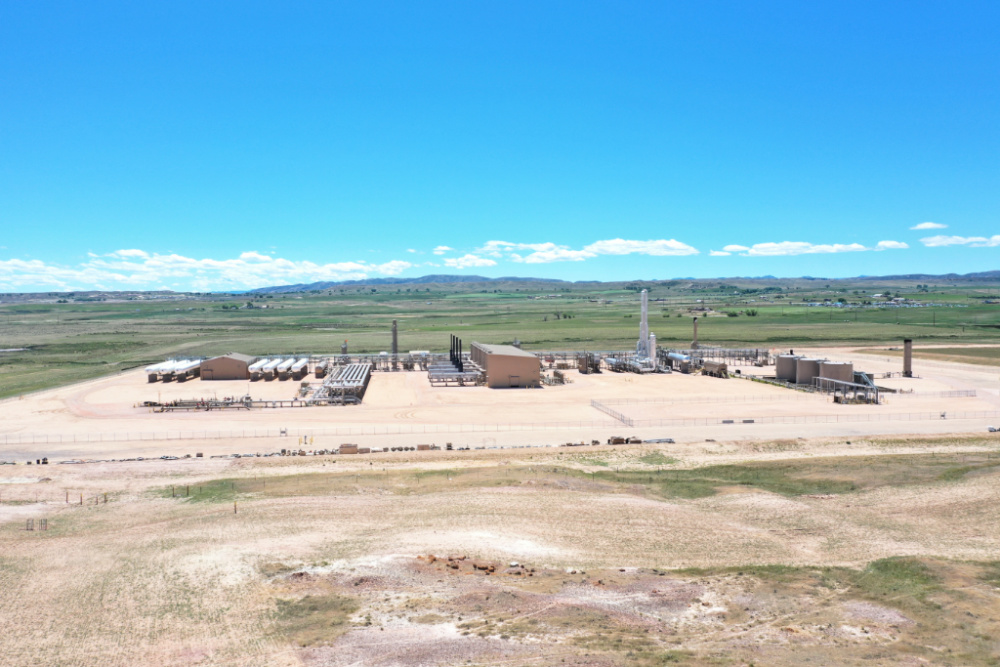
There has also been some consolidation among operators, though not in the usual sense of M&A. Given the large number of private equity-backed operators, sponsors have consolidated their portfolios under fewer management teams to reduce G&A costs.
All the effort above ground speaks to the prize underground. “This is some of the best rock in the country,” said McKee. “There are six Cretaceous intervals that come and go throughout the play and can be highly economic to develop, but what the Powder really needs from its larger operators is the delineation of the source rocks to provide repeatability. That will also assist in further driving down D&C costs. EOG has been great to watch over the years, as they have brought forth their industry-leading technology and cost structure to the basin and have proven the source rocks are viable targets. The Continental entry is great for the Powder. Continental brings scale and operating expertise along with the ability to further consolidate the smaller operators in Converse and Campbell counties.”
Despite the challenges associated with federal minerals, Eagle River expects the Powder River Basin to see robust A&D activity driven by the consolidation of private operators and a return to drilling activity in the basin related to higher oil prices and lower drilling and completion costs.
Evolving midstream approach
“We are excited to welcome Continental to the game,” Michael Woodward, senior vice president and chief commercial officer at Meritage Midstream, told Oil and Gas Investor. Noting that several mid-majors and large independents have been active in the Powder River Basin for some time, he added that this is a propitious moment for an additional well-known public company to raise the profile of the play.
As the basin has grown there has been an evolution of the midstream approach. “When we bought Thunder Creek Gas Services in 2013, we would usually build gathering pipelines to the wellhead,” said Woodward. “Those were the early innings for the play—2013 and 2014—and producers wanted to focus on finding the best recipe for the sandstones. As the play progressed, we have seen some producers do some of their own in-field gathering. We do it all. We meet producers where they want us to be, by gathering at the wellhead or a central delivery point. This is a decision new entrants will have to make.”
In some cases, the initial developers in the basin were portfolio companies backed by private equity, so their approach was to prove a field and make it ready for sale to a larger operator. “They wanted every well, prior to completion, to have a gas pipeline connected,” Woodward explained. “In some cases, if producers had midstream assets, we would purchase and operate the midstream facilities so the producer could focus on drilling.”

Those arrangements continue. For example, EOG announced plans for its own in-field gathering and handling for gas, water and oil to support a two-rig program that is part of its commitment to the Powder River Basin. Devon, however, has elected not to do its own infield gas gathering, and Meritage goes directly to the company’s wellhead.
“Everyone loves to compare the Powder to the Permian in terms of several thousand feet of stacked pay,” said Woodward. “And that is true. There is also a great deal of variability from the sandstones reservoirs to the source rock. In addition to multiple depths, there is also a menu of oil, gas and liquids content. And each zone has its own technical challenges.
“The sandstones are fairly delineated at this point,” he continued, “but the source rocks such as the Niobrara and Mowry still have some work to be done. That will take time, money and some appetite for risk. The play is more complex than the Permian or the Bakken. But the good news is this means there is more room to drive breakeven costs down and drive internal rates of return up.”
The challenge for midstream operators is how to accommodate the variability with which producers are coming to grips—what kind of molecules and at what volumes. “There can be a well with great oil that comes on at barely 200 Mcf a day of gas,” said Woodward. “Then, just a mile away, or even from the same pad, the next well can come on at 10 million cubic feet a day and tail off, or anything in between. It’s not just between zones either, we’ve seen that variability within the Turner, for example. It’s important that we design flexible systems that can handle variability and also allow our customers to grow.”
Having established relationships with many of the blue chip producers in the Powder River Basin, Meritage has been able to plan its development in collaboration with shippers. “We will continue to invest and provide capacity as needed and optimize our assets. Communication and collaboration are key,” said Woodward. “There is a fair amount of processing in place on the gas side, about 1 Bcf a day, of which about half is being used today. Producers know they can come to the Powder and grow with confidence in the midstream.”
Lower well costs
In early 2017, private equity firm Kimmeridge began building a leasehold position in the central Powder River Basin in the core of the Niobrara and Mowry plays through its wholly owned operating company, Titan Exploration LLC. “We have accumulated around 56,000 NMA [net mineral acres] offset to large public operators including EOG [Resources Inc.], Devon [Energy Corp.] and Continental [Resources],” said Alex Inkster, partner.
Kimmeridge has drilled seven operated Niobrara horizontal wells and participated as a nonop partner with EOG in nine Niobrara and two Mowry horizontal wells, reaching a maximum net production of around 5,500 boe/d.
“We believe that with limited remaining inventory in most established unconventional oil plays in the U.S. that the PRB will be the next major oil play to be developed and that it has the potential to be at the front end of the U.S. cost curve,” Inkster said.
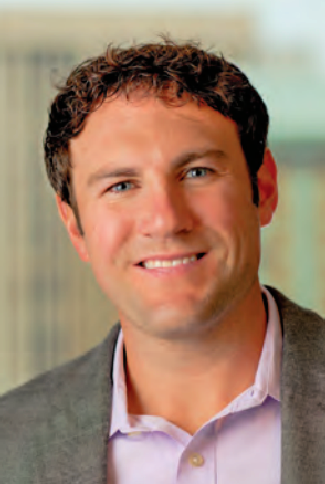
As the different Powder River Basin pay zones have been delineated over time with more wells, operators have optimized their drilling and completion strategies, said Inkster. “One of the biggest cost savings has simply been to reduce days-to-drill as operators have become more experienced with their target formations. Additionally, multibasin operators have brought best practices from other plays such as the Delaware Basin, which has shortened the learning curve in the Powder River Basin, resulting in lower well costs and better well performance. Another large area of improvement has been lowering completion costs through bulk purchasing and lower-cost sourcing of sand and water.”
Kimmeridge believes that the basin is second only to the Permian Basin in terms of stacked pay potential. Inkster noted that “as the concept of upspacing is gaining traction across the industry, inventories have declined in all the major oil basins. Coupled with both their maturity and the lack of new unconventional basins being explored and delineated, we think that the PRB will be the destination of choice for cost conscious operators that have limited remaining inventory.”
However, several issues have prevented the Powder River Basin from taking off and becoming the next hot unconventional play, Inkster cautioned.
“The perception that the PRB is structurally higher cost due to the regulatory oversight by the Bureau of Land Management, which has discouraged new entrants and thus more drilling activity,” he said.
“Leases that are easy to hold-by-production, which allows multibasin operators to quickly reallocate scarce capital to other basins during lower oil prices where they have shorter duration leases.
“Highly variable well results in the Frontier and Turner, which were mistakenly characterized as resource plays, have been shown by different operators across the basin to have very low repeatability,” Inkster said.
The variability in historic well performance is a function of the majority of Powder River Basin horizontal wells being drilled in conventional sandstone targets such as the Turner, Frontier, Shannon, Teapot and Parkman, Inkster noted. “That variability has hampered well economics and led operators to shift their focus to the shale plays where well performance is more repeatable. However, Powder River Basin operators were still able to realize economies of scale in these sandstone plays by drilling multiwell pads, with EOG, Devon and others publishing some very low well costs, such as $5 million to $6 million for the Turner. This gives us more confidence that the Niobrara and Mowry shale plays, which are much more repeatable, will see a material reduction in well cost and thus improvement in well economics once companies move to pad development.”
An evolving basin
The Powder River Basin has historically been a more expensive basin in which to operate primarily because of lower rig count and associated activity and reduced service availability, said Glen E. Christiansen, president and COO of Peak Exploration and Production LLC, based in Durango, Colo.
“The targeted formations have additional drilling challenges, such as increased depth and overpressure compared to other basins, such as the Permian,” he added. “Through time and experience however, we’ve seen costs associated with rigs, completion services and other operational services come down significantly. Drill times and completion days have dropped significantly as operators continue to optimize. For example, drill times have significantly improved through the use of surface casing preset rigs and bottom hole drilling assemblies tailored for the Powder River Basin while completion days and costs have been reduced with advances in coil tubing drill-out techniques.
Christiansen also said “there’s been a lot of attention given to production variability in the basin. However, like all reservoirs, geology, quality, completion optimization and development strategy are all important drivers of productivity. Geologic mapping of net pay and saturation are important to well placement and larger casing design, which allows higher pump rates during the completion development strategy of the tight sandstone reservoirs. The shale plays tend to be more ubiquitous but subtle characteristics, like thermal maturity and fluid types, as well as tailoring completion techniques must be considered during development.”
Anschutz Exploration Corp. is a prime example of how the Powder River Basin has evolved during the past several years from strictly delineation and appraisal to largely development mode, said Joseph DeDominic, president.
“We drilled and tested many different targets across our core operated areas, along with multiple spacing tests. It was a steep learning curve, not only for drilling, but also completions, to determine the optimal process and associated equipment, materials and people. Now that we have figured it out, we are taking advantage of a full-scale development by using multiwell pad and shared facilities including pipelines for oil and gas.”
DeDominic confirmed that Anschutz, along with EOG and the majority of the smaller operators, are focused on the source rocks, mainly the Niobrara and Mowry. “Those formations are continuous across the basin, actually across multiple states, and eliminate the variably risk. As noted, we have also drilled enough wells in the Niobrara to significantly reduce the well costs.”
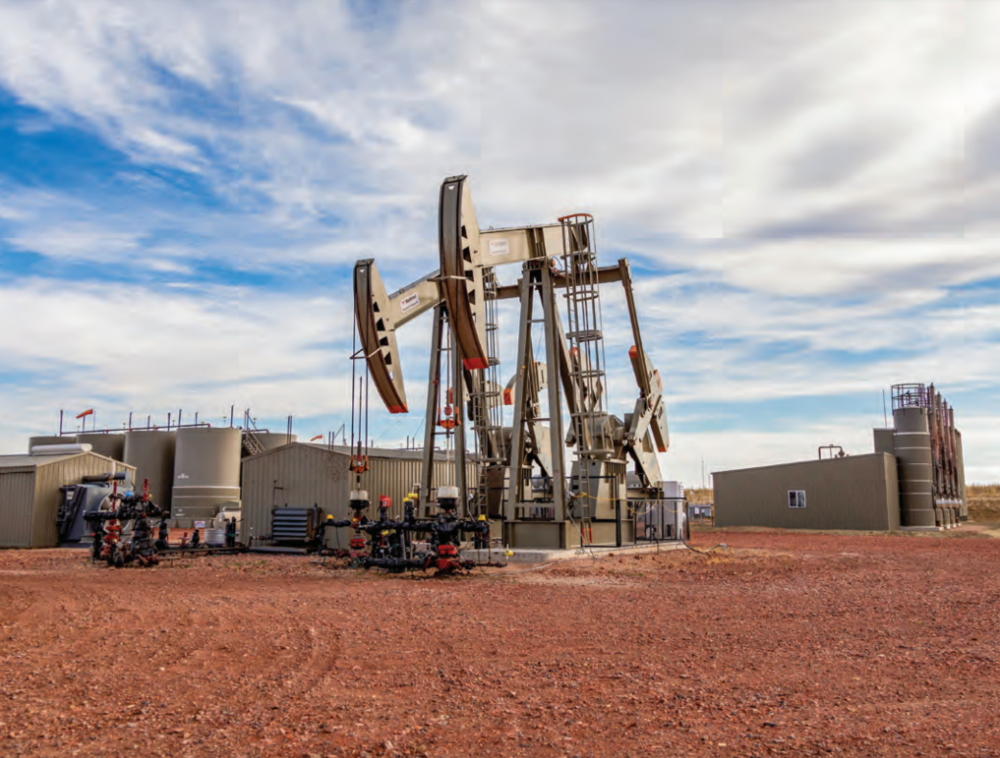
As the Powder River Basin has moved to more development mode, DeDominic said, “I foresee consolidation potentially taking place if the oil and gas markets stabilize. There is a lot of running room. Development locations are already identified, and operators or investors looking to deploy capital and receive an above-market return over a longer period will have the ability to do so in the PRB.”
While the operating companies get most of the credit for getting the basin sorted, they have lots of help. “Despite the volatile market in recent years, a number of dedicated service companies have kept their presence in the basin,” said Bryce D. Ballard, vice president of engineering and operations at Ballard Petroleum. “As a result, there is a strong knowledge base to carry forward learnings from inside the basin.”
The local support resource base is also starting to grow. “We are excited about the announcement of the PRB’s first regional sand mine operated by Ramsey Hill Exploration,” said Ballard. “The Niobrara and Mowry shale play both seem to need high volumes of proppant, and we’re hoping local material allows us to pump those high volumes for a reasonable price. Another critical development in recent years has been the growth in the PRB’s water disposal infrastructure. Recent disposal wells and evaporation pits will allow operators to dispose of water at a much lower cost than previously.”
To date most development in the Powder River Basin has focused on the sand plays, said Ballard, “but we expect the vast majority of future development to focus on the shales. Early delineation of the Niobrara and Mowry shales has already shown each to have a much larger productive fairway than any of the sands. That leads us to expect less variability in the shales over the long term. We see the sand variability as an opportunity for exploration teams to generate additional returns beyond the baseline shale expectations.”
As for consolidation, Ballard is circumspect. “Time will show the Niobrara and Mowry variability to be low enough to support consolidation. In addition to the major public players, the basin is full of privately backed companies designed for a build-and-flip business model. Obvious consolidation opportunities exists for each of the major players to purchase these private operators.
“Similar to other shales, the Niobrara and Mowry will require significant upfront capital to move from exploration to development mode. The inability of smaller private operators to secure this level capital may further drive consolidation.”
Recommended Reading
SBM Offshore, Technip Enter Floating Offshore Wind JV
2024-03-14 - EkWiL, the 50/50 joint venture entity between the companies, will deploy Technip’s Semi-submersible INO15 by T.E.N. and SBM’s Tension Leg Platform Float4Wind.
Eversource to Sell Sunrise Wind Stake to Ørsted
2024-04-19 - Eversource Energy said it will provide service to Ørsted and remain contracted to lead the onshore construction of Sunrise following the closing of the transaction.
Equinor, Ørsted Bid for Better Contract in NY Offshore Wind Auction
2024-01-26 - New York State has received bids to supply power from three offshore wind projects in its expedited fourth solicitation that allowed developers to exit old contracts and re-offer projects at higher prices.
US Gives Final Green Light to Sunrise Wind Offshore Project
2024-03-26 - The approval by the Bureau of Ocean Energy Management solidified Ørsted and Eversource’s commitment to the project with both taking final investment decisions.
US Clears 2.6-GW Offshore New England Wind Project
2024-04-04 - Located south of Martha’s Vineyard off of Massachusetts, the project consists of the 791-megawatt New England Wind 1 and the 1.87-GW New England Wind 2.



